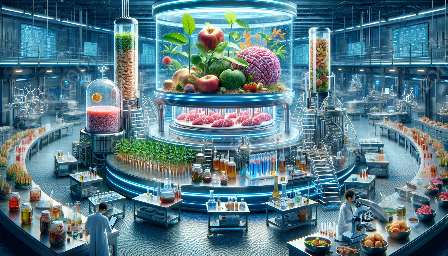Food spoilage and microbial contamination are important factors that can affect the safety, quality, and shelf life of food products. This topic cluster explores these phenomena in the context of the food processing industry and discusses the role of bioremediation and food biotechnology in addressing these challenges.
Food Spoilage and Microbial Contamination
Food spoilage refers to the deterioration of food products, making them unfit for consumption due to changes in their sensory attributes, such as odor, taste, and appearance. Microbial contamination, on the other hand, involves the presence of harmful microorganisms, such as bacteria, yeasts, and molds, in food, leading to potential health risks for consumers.
Microbial contamination can occur at various stages of food production, including during harvesting, processing, storage, and distribution. Factors such as improper handling, inadequate storage conditions, and cross-contamination can contribute to food spoilage and microbial contamination.
Types of Food Spoilage
There are several types of food spoilage, including:
- Bacterial spoilage: Caused by the growth of bacteria in food, leading to off-flavors, discoloration, and texture changes.
- Yeast spoilage: Yeasts can spoil food by producing off-flavors and causing texture changes in products like bread and beverages.
- Mold spoilage: Molds can grow on various food surfaces, producing toxins and causing visible mold growth.
- Enzymatic spoilage: Enzymes present in food can lead to undesirable changes, such as browning and flavor deterioration.
Impact of Food Spoilage
Food spoilage not only affects the sensory qualities of food products but also poses economic losses for the food industry and health risks for consumers. Contaminated food can cause foodborne illnesses, leading to serious health consequences and potential legal repercussions for food producers.
Bioremediation of Contaminants in the Food Processing Industry
Bioremediation involves the use of biological agents, such as microorganisms and enzymes, to degrade or detoxify contaminants in various environmental settings, including the food processing industry. In the context of microbial contamination in food, bioremediation offers sustainable solutions for mitigating the risks associated with foodborne pathogens and spoilage microorganisms.
Bioremediation Approaches
Bioremediation methods in the food processing industry may include:
- Microbial bioremediation: Utilizing specific strains of bacteria or fungi to degrade contaminants in food processing wastewater or contaminated food products.
- Enzyme-based bioremediation: Harnessing the catalytic properties of enzymes to break down harmful compounds, such as mycotoxins and other foodborne toxins.
- Bioremediation through fermentation: Employing fermentation processes to control microbial contamination and improve food safety and preservation.
Advantages of Bioremediation
Bioremediation offers several advantages for addressing microbial contamination in the food processing industry, including:
- Environmentally friendly: Bioremediation reduces the reliance on chemical treatments, minimizing environmental impact and promoting sustainability in food production.
- Cost-effective: Implementing bioremediation strategies can lead to cost savings in waste management and food safety measures.
- Potential for value-added products: Bioremediation processes may result in byproducts with commercial potential, such as bioactive compounds or probiotics.
Food Biotechnology
Food biotechnology encompasses the application of biological techniques and technologies to improve the production, processing, and safety of food products. In the context of food spoilage and microbial contamination, biotechnology offers innovative approaches for enhancing food quality and safety.
Applications of Food Biotechnology
Examples of food biotechnology applications related to food spoilage and contamination include:
- Genetic modification for food safety: Developing genetically modified organisms (GMOs) with enhanced resistance to spoilage microorganisms or improved food preservation characteristics.
- Biopreservation: Using selected microbial cultures or their metabolites to control spoilage and pathogenic microorganisms in food products.
- Rapid detection methods: Implementing biotechnological tools for the rapid and accurate detection of microbial contaminants in food samples.
Benefits of Food Biotechnology
Food biotechnology offers several benefits in addressing food spoilage and microbial contamination, such as:
- Improved food safety: Biotechnological interventions can enhance the safety and shelf life of food products by targeting spoilage microorganisms and foodborne pathogens.
- Sustainable solutions: Biotechnology supports the development of sustainable food processing practices, reducing food waste and minimizing the use of chemical preservatives.
- Innovation in product development: Biotechnological advancements enable the creation of novel food products with improved sensory qualities and extended shelf life.
Conclusion
Understanding the complex interactions between food spoilage, microbial contamination, bioremediation, and food biotechnology is essential for ensuring the safety and quality of food products. By leveraging bioremediation strategies and food biotechnology innovations, the food processing industry can mitigate the risks posed by microbial contaminants, improve food preservation methods, and meet the evolving demands of consumers for safe and sustainable food options.

